Have you seen those tempting ads for Macy’s closing down or clearance sales offering 90% off handbags, watches and more? Don’t let the deals fool you. Scammers are running rampant on social media promoting fake Macy’s websites to capitalize on shopper’s hunt for bargains.
These convincing discount offers are a total scam designed to steal your money. Read on to learn how to recognize these fraudulent websites and ads, avoid becoming a victim, and protect yourself if you fell for the deals. You’ll be shocked at just how closely these scams imitate the real Macy’s shopping experience. But there are key signs to identify the fakes and shop smart. Don’t let scammers line their pockets by using Macy’s good name against you.
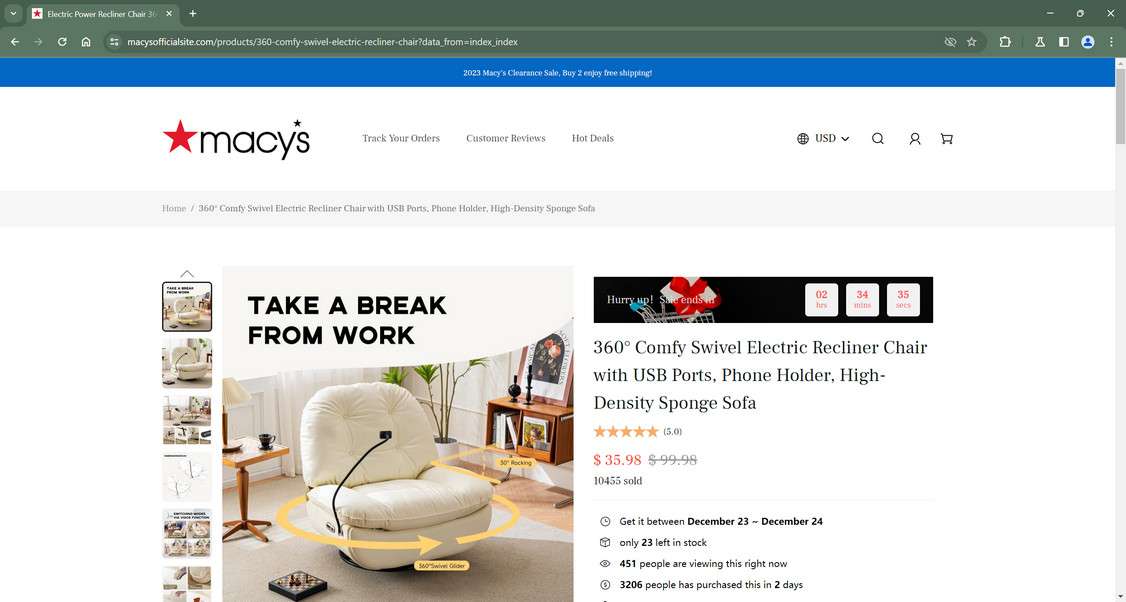

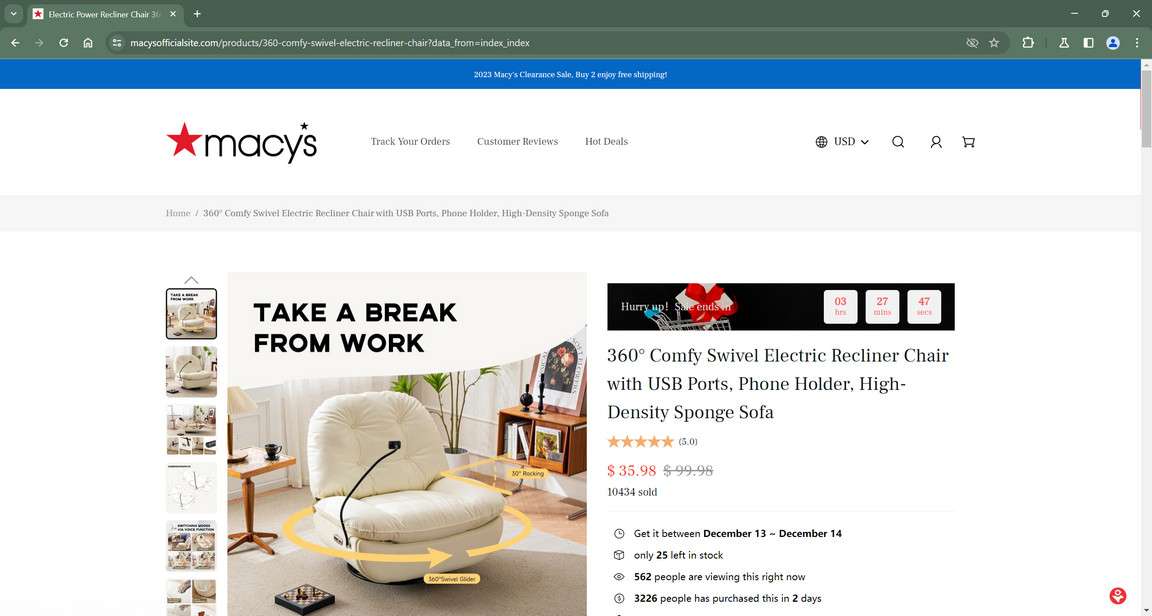
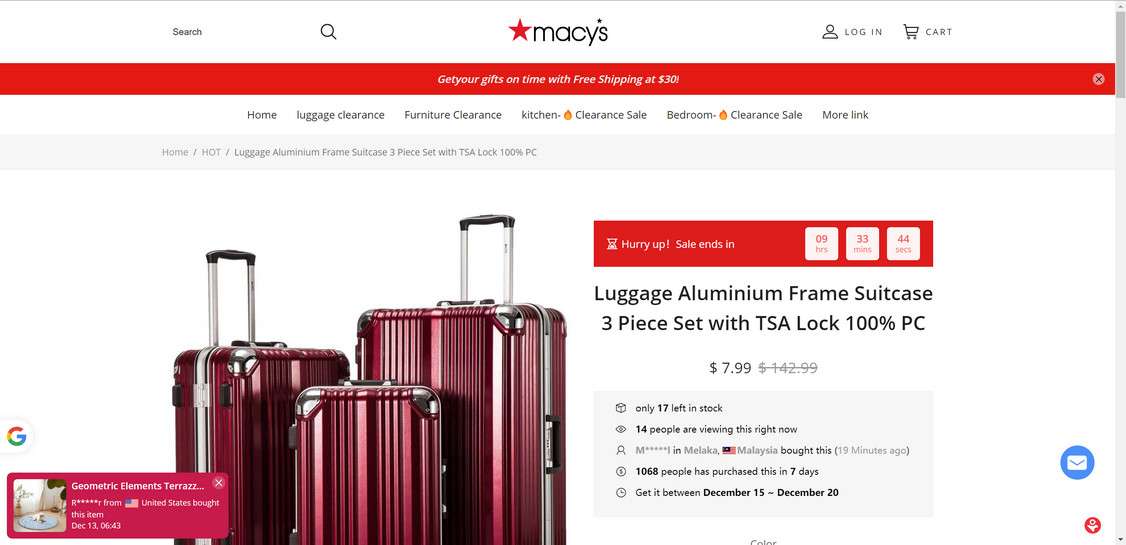
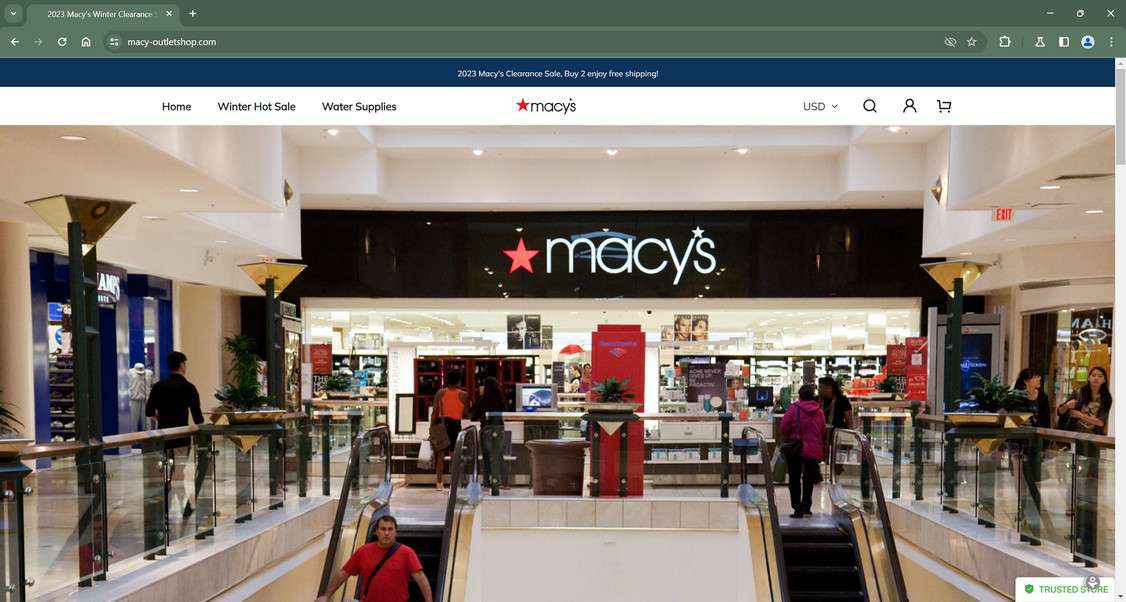

Overview of the Macy’s 90% Off Clearance Sale Scam
The Macy’s clearance sale scam is orchestrated by fraudsters seeking to capitalize on the famous department store’s reputation to make easy money. They do this by creating fake ecommerce websites, social media accounts, and online ads that mirror the look and feel of Macy’s official channels.
These scammers go to great lengths to make their fake promotions appear legitimate. Their sites use the real Macy’s logo, the same color schemes, similar layouts, and stolen product photos. The scam pages are loaded with enticing keywords around unbelievable markdowns like “clearance”, “limited time only”, and “flash sale” to hook shoppers.
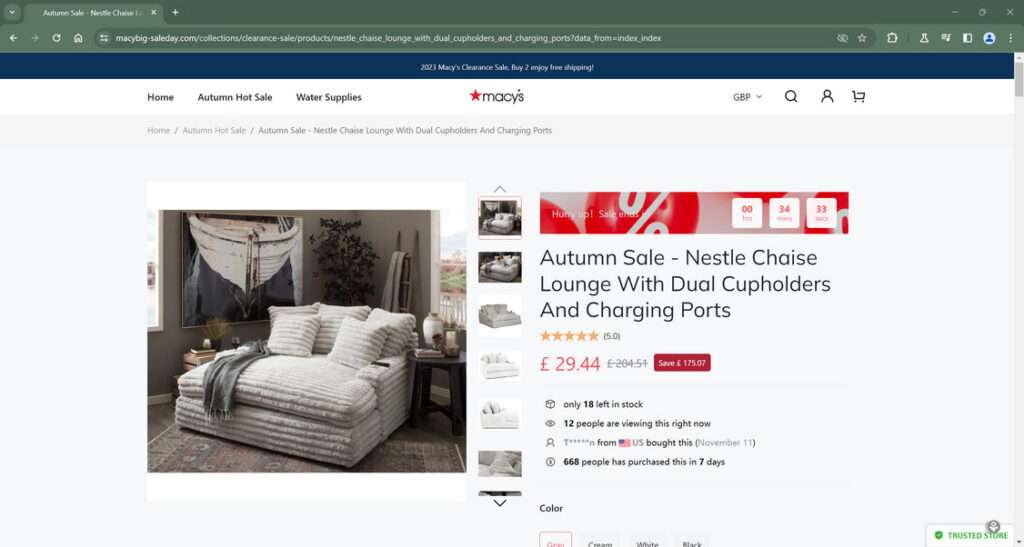
Specific mention of clearance prices like $29 handbags, $39 watches, and $49 shoes make the deals seem irresistible. After all, designer items that normally cost hundreds of dollars available at 90% off is an amazing steal—if it were true.
But the reality is these are fraudulent stores with no actual affiliation to Macy’s. They simply use Macy’s branding and reputation to feign credibility.
The fake shopping websites are the backbone of the scam. But the promotion spreads through sponsored posts and paid ads on social platforms like Facebook, Instagram, TikTok, and more.
These social ads target users with interests and demographics suggesting they love shopping bargains and discounts. The ads feature Macy’s logos and models wearing designer clothes with copy like “Going out of business!”, “Store closing!” and “Clearance sale!”
When social media users see these attention-grabbing ads in their feeds, many will click assuming it’s the real Macy’s store promoting legitimate sales on their excess inventory or discontinued items.
But the social ads actually divert to the fake scam websites designed specifically by the fraudsters to steal credit card information and payments.
These sites accept orders with unbelievable discounts on stolen product imagery. However, victims either receive nothing, cheap counterfeits, or random low-value items. The scammers pocket the money while the customers get scammed.
Some key examples of the types of items advertised at implausible clearance prices include:
- Designer handbags originally $500+ marked down to $29
- Men’s and women’s watches originally $800+ for only $39
- High-end sneakers and shoes originally $250+ now $49
- Luxury sunglasses originally $300+ now $29
- Diamond jewelry originally $3000+ now just $39
They focus on extravagant markdowns that seem too good to pass up. And they rely on the average person’s knowledge that Macy’s is a reputable major retailer. Who wouldn’t jump at a $500 Coach purse for just $29?
But again, these unbelievable prices should be the first red flag. While Macy’s does offer legitimate sales often, discounts this drastic on luxury items only exist on scam websites.
The faux shopping sites even go as far as pretending to offer promo codes for free shipping to appear more enticing. Of course these codes don’t actually work.
The scam artists use these techniques to dupe regular online shoppers who love hunting down bargains and great deals. Ultimately their only goal is taking payments while putting in minimal effort and providing nothing in return.
By mirroring official branding and exploiting Macy’s reputation, they easily trick multitudes of social media users into making fraudulent purchases. Stay vigilant as these convincing scams only continue growing in numbers and complexity.
How the Macy’s 90% Off Clearance Sale Scam Works
The Macy’s clearance sale scam is orchestrated in the following way:
1. Scammers Set Up Fake Ecommerce Websites
The first step is for scammers to register and build fake ecommerce websites designed specifically to mimic the real Macy’s online store.
They choose domain names that sound similar to Macy’s, for example using “Macys” with one “y”, or including words like “outlet”, “warehouse”, “store”, “shop”, or “official” in the URL.

The websites are designed using Macy’s logo, fonts, colors, and overall aesthetic. The scammers essentially create a replica of the real Macy’s site, loading it with stock photos of Macy’s stores and products.
This helps establish legitimacy and trust in the eyes of potential victims. The website copy also mirrors language customers would expect to see on the real Macy’s site.
2. Fake Ads Created Promoting Clearance Sale
Once the scam websites are ready, the scammers create online ads promoting a massive clearance sale with up to 90% off all items.
The ads list specific examples like designer handbags for $29, watches for $39 and shoes for just $49. They also use enticing slogans around the clearance like “Going out of business”, “Limited time only” or “Store closing sale” to create urgency.
The scammers pay to run these ads on social platforms like Facebook, Instagram, TikTok and more to target a large swath of potential victims.
The ads include the familiar Macy’s logo and showcase models wearing designer clothing and accessories. Everything about the ads is carefully designed to look exactly like a promotion from the real Macy’s.
3. Shoppers Click Ads and Purchase from Fake Website
When social media users see these ads in their feeds, many will click assuming the unbelievable deals are from Macy’s. The ads specifically show the Macy’s logo and spotlight clearance prices like $29 handbags to build trust and get clicks.
So unsuspecting bargain hunters click, assuming it will take them to the real Macy’s website. However, it redirects to the fake scam website instead.
The scam website looks so legitimate that victims browse the clearance items and make seemingly amazing purchases at 90% off. They enter credit card info and billing addresses as normal.
The website is set up to take the payments just like any real online shop. But of course, the scammers have no intention of fulfilling the orders.
4. No Items Shipped, Counterfeits Sent Instead
Once the orders are placed, a couple things typically happen. The most common result is that absolutely nothing is shipped out. The scammers take the funds and close up shop after enough payments roll in.
In other cases, the scammers will send a cheap counterfeit or knockoff version of the item ordered. For example, instead of a real $300 designer handbag, victims receive a fake bag that likely costs $5 to produce.
Or sometimes they send a random low-value item like a $2 bracelet or pair of sunglasses. This helps the scammers skirt credit card fraud protections since an actual physical item was shipped.
Either way, the shopper ends up receiving nothing close to the real Macy’s designer merchandise advertised at clearance prices. The ads and websites turn out to be an elaborate ruse to pocket funds from duped clearance shoppers.
5. No Way to Contact the Scam Company
A key indicator this is a scam comes when victims try to contact the company about their missing items. The website only lists a generic email address that goes unanswered.
If a customer service phone number is shown, it will either be non-working or tied to an automated recording system. Any physical addresses displayed for the company will be fake and untraceable as well.
Essentially, once the order is placed there is no way for the buyer to get in touch with the company. The scammers offering the fake discounts vanish after collecting funds.
This makes it impossible for victims to recoup any money or even question where the merchandise is. The scammers maximized their profits by cutting off all communication.
How to Identify the Fake Macy’s Clearance Websites
While these fraudulent shopping websites go to great efforts to appear as the real deal, they do leave behind some clues allowing savvy shoppers to identify them as scams. Here are the top signs to look for when assessing if a supposed Macy’s site is fake:
Recently Created Domains
A quick domain registration check reveals most fake Macy’s scam sites were recently registered within the past year or even past few months.
The scammers constantly put up new websites to rip people off, then abandon them once word gets out they are illegitimate. They don’t invest in established sites, just cheap short-term storefronts.
Tools like WhoIs domain lookup allow you to see when any website was first registered. If it was just created in the past few months, it’s likely a scam site trying to cash in on Macy’s reputation.
Similar but Fake URLs
The website URLs themselves usually give away they don’t belong to the real Macy’s. They’ll try to appear close, using the Macy’s name with one “y” instead of two or additional keywords like “outlet” “store” “warehouse” “shop” or “official”.
For example:
- macyswarehouse.com
- macysoutlet-store.com
- macysofficialwebsite.com
Basically the URL will look almost right, but not quite exact. The real Macy’s domain is just macys.com without any extra fluff keywords. Be wary anytime you see extra terms shoehorned into the domain.
Stock Site Design with Stolen Images
The layouts tend to be generic store templates rather than custom-designed sites. And all the product imagery is stolen from the real Macy’s catalog or other retailers.
Reverse image searches reveal the handbag, watch, shoe, and other product photos are ripped from authentic sites then used illegally. Obviously a legitimate store would never use plagiarized images.
Implausible Discounts and Deals
As outlined before, the main gimmick is promoting designer goods at 70-90% off. $500 handbags for $29, $800 watches for $39.
Macy’s runs sales, but not perpetual closeout steals at 90% off. These prices are clearly bogus. Repeat mentions of “going out of business” and “limited time only” try to create urgency too.
No Physical Address
One very telling indicator is a lack of any store location or corporate address on the Contact Us page. They’ll avoid listing a real address that could reveal them as fakes. At most, they list a fake address to bogus PO boxes.
Missing Contact Information
Along with no physical address, the sites will not have a working customer service phone number or email. Or the phone goes to an automated message and emails bounce back undeliverable.
No legitimate retailer would operate with zero ways for customers to contact them. Lack of contact info is a giveaway something is amiss.
No Social Media Presence
Big retailers promote themselves heavily on social media channels. But these Macy’s scam sites have zero social accounts on Facebook, Instagram, Twitter, or anywhere else.
The scammers limit their presence to paid ads promoting their site rather than investing time in building a social following. No social equals a major red flag.
Spotting these fake discount shopping sites comes down to looking for minor details that seem off paired with promotions that are too good to be true. Always verify URLs carefully and do your due diligence.
Identifying the Scam Ads on Social Media
In addition to the fake websites, the Macy’s clearance scam also relies heavily on sponsored ads across social media platforms to lure in victims. The ads can be found on Facebook, Instagram, TikTok, and more.
Knowing the common traits of these fraudulent social media ads can help prevent you from falling for the deals and losing money.
Spotting Scam Facebook Ads
The Facebook ads will be formatted identically to legitimate Macy’s promotions. They include the Macy’s logo, high-quality product shots, and eye-catching animations or video clips showing designer items.
Closer inspection reveals telltale signs of a fraudulent Facebook ad:
- Drastic “90% Off” discounts in bold text
- Buzzwords like “blowout sale” or “warehouse clearance”
- Items priced at $29, $39, or $49 specifically
- Comment sections turned OFF to avoid warnings
- Newly created Facebook page with few followers
- Page only shares ads, no other content
- URL goes to fake site, not macys.com
For example, a fake Macy’s Facebook ad may showcase a $600 Michael Kors handbag available for just $29! Or offer $800 watches now only $39! The items look plush in the ads, but are only inexpensive counterfeits.
Be Wary of Instagram Clearance Sale Ads
On Instagram, the scam ads leverage “shoppable posts” meaning you can click directly from the ad to checkout. But again, telltale signs expose them as fraudulent:
- Too good to be true “Final clearance!” discounts
- Prices like $29 shoes or $39 jewelry
- New Instagram account with no posts
- Username @macysinsider or @macysstores rather than @macys
- Link goes to fake site instead of Instagram checkout
The scam Instagram accounts also use “video covers” simulating an Instagram Story clip to grab attention. But it’s just a cover image linking to the fake site.
Don’t Trust TikTok Videos Promoting Huge Discounts
Fraudulent TikTok accounts post video clips highlighting the same “closing down sale” on designer items. But a few tips can help determine if it’s a scam:
- Brand new TikTok account with only promo clips
- Video recycles same enticing deals
- Links to sketchy URL in bio instead of macys.com
- Comment section turned off
- Video compilation uses stock content and images
A big trend is AI-generated videos showing fake stores and products using computer graphics. But no real employees or customers are shown. The clips just showcase the huge discounts to attract clicks.
Apply extra scrutiny to unbelievable social media discounts. Verify URLs carefully and check account details to avoid the scammy ads. If you avoid sharing or clicking these promotions, it helps reduce their spread and visibility to potential victims.
What to Do if You Fell Victim to the Macy’s Clearance Scam
If you unfortunately fell prey and lost money to one of these fake Macy’s ecommerce websites, take these steps:
1. Contact Your Credit Card Company
The first step is to get in touch with your credit card company and inform them you believe you were defrauded. Report that you ordered merchandise that was either never delivered, or was grossly misrepresented on the website.
Request to begin a chargeback process to potentially have the charges reversed and money credited back. Provide all details like the transaction dates, website URL, and any screenshots as evidence.
2. Report Fraud to Macy’s
Contact the real Macy’s customer service and notify them there are fraudulent websites using their branding to scam customers. Send them the URLs to any fake sites and details around the ads you saw promoting them.
Macy’s has dedicated internet security and fraud teams who can investigate and send cease and desist notices. This can potentially get the fake sites shut down quicker.
3. File Complaints with Consumer Advocacy Groups
Organizations like the Better Business Bureau, Federal Trade Commission, and state consumer protection offices all allow you to file official complaints regarding fraud.
Include details like the URL of the fake site, ads you saw, and screenshot evidence. This creates a paper trail in case legal action arises later.
4. Warn Your Social Networks
Post on your social media channels about the scam to alert friends and followers. Share the specific website URL, ads, and instructions to avoid falling for the fake Macy’s promotions.
This helps prevent the scammers from victimizing even more of your connections with their deceptive clearance sale campaigns.
5. Leave Online Reviews
Search for the fraudulent website and leave reviews warning others about the scam. Detail what items you thought you ordered, what wound up arriving, and the fact you could not contact the company after your purchase.
This may prevent other shoppers from taking the bait and losing money as well. Be sure to include phrases like “scam website” and “fake Macy’s” directly in your reviews to maximize impact.
While getting defrauded is extremely unfortunate, taking these steps immediately after can help mitigate damages and prevent others from also being victimized.
Frequently Asked Questions About the Fake Macy’s Clearance Sales
1. Are the Macy’s 90% off sales on social media real?
No. Any ads or posts promoting Macy’s clearance items at 90% off or similar huge discounts are scams. Macy’s runs legitimate sales, but prices that seem too good to be true always indicate a fraudulent advertisement.
2. What happens if I order from the fake Macy’s websites?
In most cases, your credit card will be charged but you’ll never receive anything. Or you’ll get a cheap counterfeit item far inferior to what was pictured. Either way, you lose money and get nothing resembling what was advertised.
3. Can I tell if a Macy’s website is fake?
Yes, fake sites can be identified by looking for red flags like recently registered domains, slight variations of the URL, and lack of contact information. See the “How to Identify Fake Sites” section above for a full checklist.
4. Why does Macy’s allow these scams?
Macy’s does not allow or authorize these fraudulent websites and social media accounts. They are orchestrated entirely by scammers with no affiliation to Macy’s. Macy’s actively works to get fake sites shut down.
5. Is it illegal to buy counterfeit goods from these sites?
Technically yes, purchasing counterfeit goods breaks trademark and copyright laws. But the victims of these scams are generally not the ones who get in legal trouble.
6. Can I get my money back if I was scammed?
You should immediately contact your credit card company and request the charges be reversed under a chargeback program. Provide evidence proving you never received what was ordered.
7. How can I report a fake Macy’s website or ad?
Use the real Macy’s contact email and phone numbers to notify their security team. You can also file official complaints with the FTC and BBB to get the scam promotions shut down faster.
8. How do I avoid getting tricked by these scams?
Stick to the official Macy’s website at macys.com for your purchases. And never click social media ads promoting clearance discounts over 50-60% off. Always verify it’s the real Macy’s account posting.
9. Why does Macy’s have so many scam sites impersonating them?
Macy’s is a well-known major retailer. Scammers exploit this reputation to make their fake discounts seem plausible to victims. Macy’s fame makes them a prime target for these impersonation scams.
10. Are other big retailers targeted by these 90% off scams too?
Yes, similar clearance scams impersonate many top stores like Walmart, Target, Costco, Best Buy, and more. Always verify legitimacy and look for red flags no matter the company.
Be vigilant and use common sense to avoid getting duped by the rampant fake Macy’s websites, social media pages, and ads promoting huge markdowns. Only shop directly through macys.com or in official Macy’s stores.
The Bottom Line
The Macy’s 90% off clearance sale scam preys upon unsuspecting bargain shoppers across social media and fake websites. Scammers rely on the reputation of major retailers like Macy’s to fool their victims into amazing deals that turned out to be completely fraudulent.
Stay vigilant when searching for discounts online, as many scams exist solely to steal credit card information and payments. Only make purchases directly through the official Macy’s website at macys.com or their legitimate mobile app.
Avoid any secondary sites promoting unbelievable clearance sales and always do your due diligence on researching sellers. If you do happen to fall victim to one of these scams, act swiftly in reporting it to proper authorities. By staying aware and proactive, we can reduce the spread of these deceptive fake shopping websites that try to cash in on the Macy’s name.










